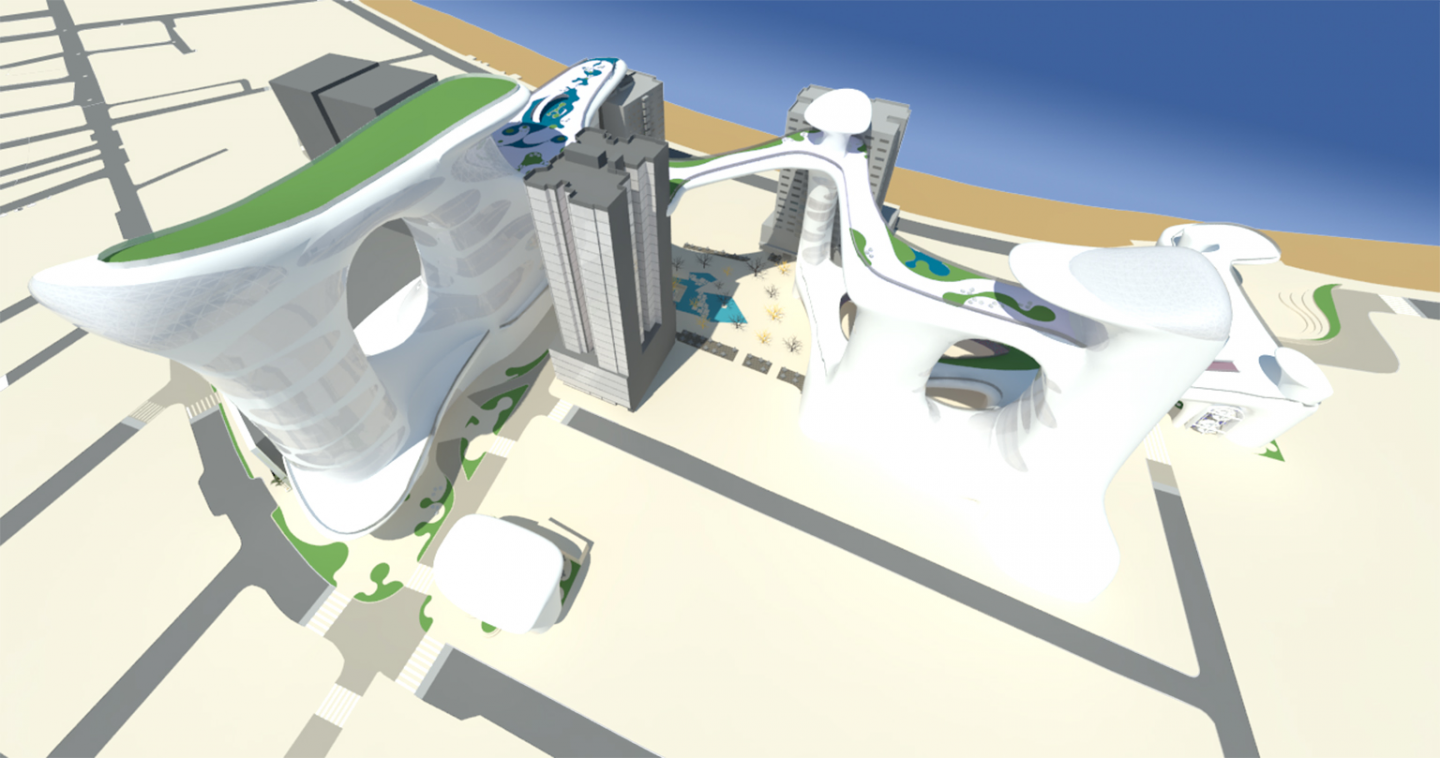The world is full. Since 2014 we passed the mark of 7 billion people on the planet. Approximately 54% of this population lives in urban areas, turning us into an urban planet. The migration for to these urban centers generates the Megacities. Metropolitan areas of 10 million inhabitants or more. Currently, according to the United Nations we have 28 megacities, the prospect is this number will increase to 41 in 2030.
The city suffers pressure from all sides, being forced to grow vertically. This pressure also causes escape areas of the city fabric, which concentrate again away from the main densification, segregating the cities, creating dispersion in the territory. The residual spaces resulting from densification are fragmented and are not able to create quality public spaces. Today we suffer the loss and privatization of vital public spaces for human coexistence.
Balneário Camboriú city is a major beach resort in the Brazilian southern state of Santa Catarina located on the northern coast of the state, is a city with an area of 46.244 km² and a population of 128,155 inhabitants (2015 Cencus) having the highest demographic density of the state with 2,337, 67 inhab. / km² (2015 Cencus), with a floating population which exceeds 1 million people in summer season, in the 2014/2015 season surpassed the mark of 2 million of tourists in the city. The main economic activity of the city is civil engineering and tourism, with several paradisiacal beaches and vibrant nightlife, in a story published in late February 2012 by Forbes magazine, Balneário Camboriú was presented as "the capital of e-music" in the country.
In Balneario Camboriu the process of densification and verticalization initially results from the tourism exploration, powered and maintained by economic logic, based on the construction and real estate market, with the municipal law which governs this occupation, making her the second most vertical city in the country. The scarce public spaces, survivors of the great densification, are squeezed by the isolated towers, disconnected and low functional and spatial quality, failing to guarantee the vitality necessary to their proper functioning.
The project proposes new urban spaces, using the architecture to create new public spaces in different layers. Making the connection between existing public spaces in the city and buildings in the site to new public spaces and proposed edifications with mixed use.
The architectural idea arises from the symbiosis, a parasitic architecture that is anchored in the existing buildings on the site and creates a system interdependent between them with mutual advantages.
2015
2015
Thesis and Graduation Project
Video Link: https://vimeo.com/151089670
Roger Sachett




















